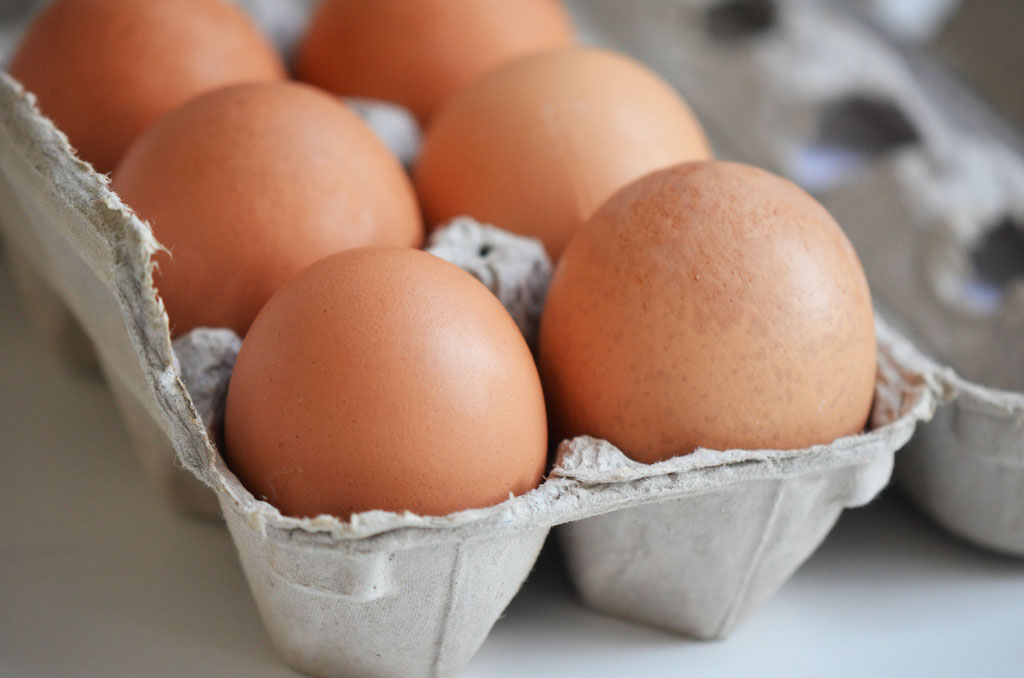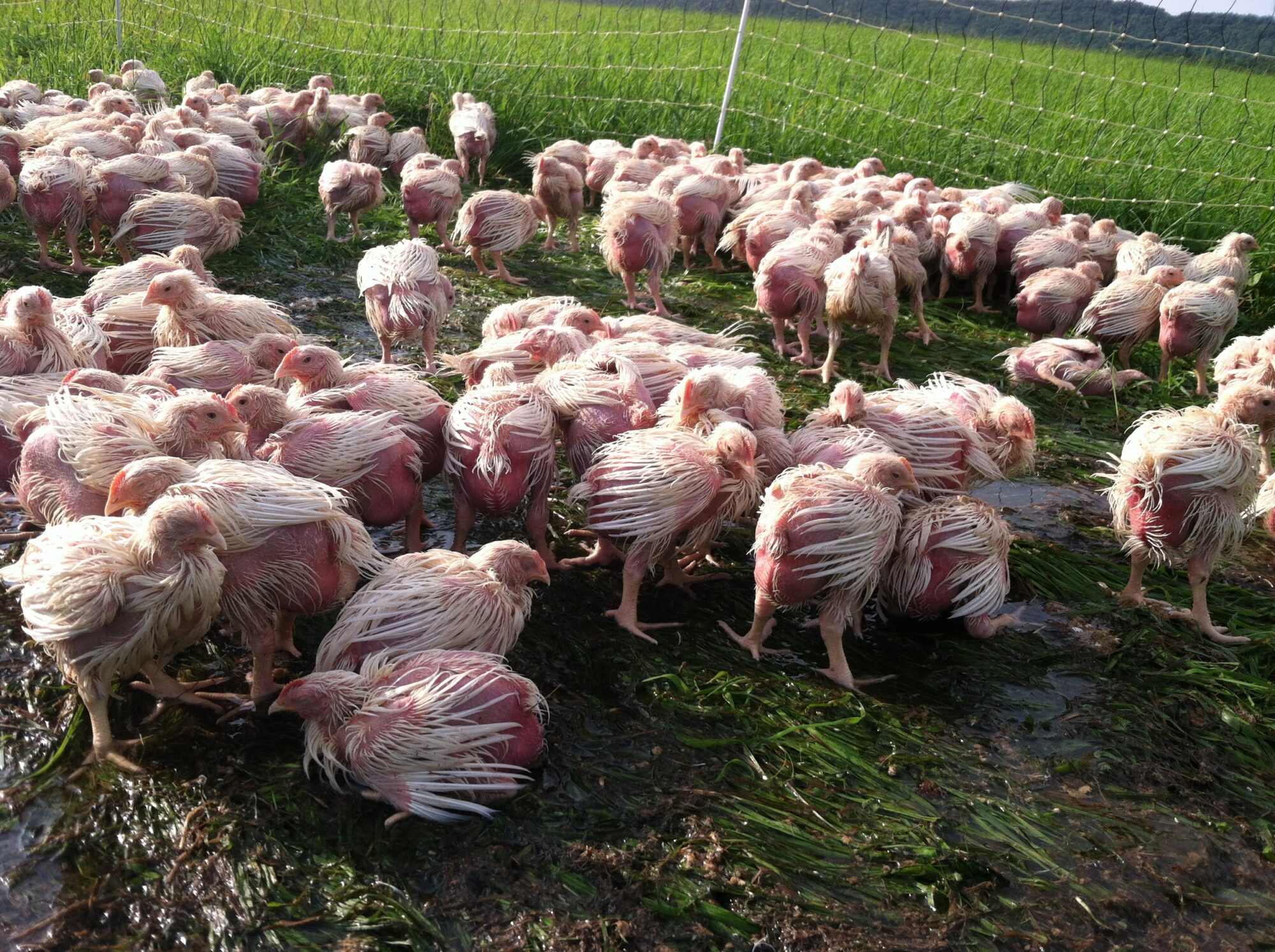Bakers, breakfast joints, and egg lovers everywhere have noticed that our nation is experiencing a major egg shortage. A particularly virulent and deadly form of the avian flu (H5N2) devastated egg-producing and turkey farmers this spring, particularly in the Midwest, meaning fewer eggs in the grocery store and higher prices at the checkout. Farmers and health officials have had to destroy more than 48 million birds in 16 states and Canada. The outbreak, believed to be caused by migratory birds, has affected commercial and backyard flocks alike but has since been contained via new, stringent biosecurity measures and warmer summer temperatures in which the virus cannot survive. Of course, fall brings cooler temperatures and another wave of migratory birds, so health officials and poultry farmers everywhere are bracing for what could be an even more devastating round two.
Because the disease is so highly transmissible and so very deadly, flocks found to have been infected are destroyed in their entirety inside their housing and composted in place, using high heat and time to destroy the virus. Farmers whose flocks are infected and then destroyed lose at minimum 6 weeks’ use of the housing. Only after receiving the green light from government inspectors can they replace their livestock, along with putting new, more rigorous biosecurity measures in place. Of course it takes time to raise a hen from the chick stage to actually producing eggs—approximately 5 months. Industry analysts say it could be another year before US farmers are able to return to previous production levels. In the meantime, food companies large and small that normally use lots of eggs have been scrambling (pun intended) to find egg substitutes. The US has even begun to import eggs—lots of them—from countries like France and the Netherlands. Whether or not you buy eggs at the grocery store, chances are your pocketbook has been affected since eggs are found in so many foods. The net result is not insignificant. Analysts predict that US consumers will ultimately spend an additional $7.5 to $8 billion because of the shortage.
>
“Industry analysts say it could be another year before US farmers are able to return to previous production levels.”
While you may have noticed the spike in egg prices and perhaps even the cause, you may have also noticed a corresponding precipitous drop in chicken meat prices. Oddly enough, it is all related. While the deadly strain of avian flu has affected laying flocks, it has not infiltrated meat bird operations, keeping the nation’s supplies at their usual levels. Unfortunately, despite the fact that this flu has not affected meat birds, nor has it any chance of entering the food chain, countries that are normally large importers of US chicken (like China and South Korea) have barred its import as a precautionary measure. Chicken farmers in the US are left with a supply that greatly outpaces demand, causing the current drop in price.
We have been supremely fortunate so far here in New York State and the Northeast in general in not having had any cases…yet. Cornell University, its extension offices, and the state’s Agriculture and Markets division have kept poultry producers informed of the virus’ path, successful interventions, and instructions on what to do if we suspect a case on our farm. The state even took the precaution of barring poultry from all county and state fair competitions. The Centers for Disease Control and Prevention have kept a close eye on the virus’ progress, too, warning that while transmission to humans is rare, it is possible. Vaccines have been developed for both humans and poultry, although the poultry version would only slow the virus’ progress, not halt it altogether.
To be sure, chickens have always posed a bit of a challenge for large and small farmers alike. For example, as daylight hours diminish every fall, chicken owners all experience the same disappointing phenomenon—a slowing or even a total stop in egg production. Chickens are light-sensitive, and will almost cease laying eggs for a few months as the days get shorter. Some will “molt”, losing many of their feathers, resulting in a rather disheveled look. Some folks will choose to leave a light (on a timer) on in the chicken house in an effort to “fool” the chickens into thinking the days are not getting shorter. This trick will work for at least a little while—I’ve done it myself—but the girls will eventually take their break one way or another, despite the farmer’s best efforts. Of course, the chickens still eat their usual ration of food while on their “egg strike”. In fact, my husband lobbies hard every year to get rid of our egg-laying chickens, pointing out that they are a money-losing venture. It costs $16 per day to feed our 150+ laying hens. During the fall, their production drops to about one dozen eggs each day. Of course we don’t charge $16 for that carton of eggs. We sell what few eggs we get and keep feeding the hens, losing approximately $12 per day…and hope they start laying again soon!
As a chicken farmer, I’ve been watching the avian flu story with great interest and no small amount of worry. Our own chickens range far and wide and have regular contact with wild birds. I’ve seen crows, pigeons, and song birds of all types helping themselves to our outdoor feeders and waterers. (The recommendation of state officials, of course, has been to protect poultry from these encounters.) I am reminded that the troubles posed by chickens, whether caused by a nationwide flu outbreak, a natural weather disaster, or simply the rhythms of Mother Nature, are the same troubles experienced by farmers everywhere—regardless of what they raise. I’m grateful that there is a system in place to help farmers meet these challenges, where state officials and universities research the issue and share information. What worries me the most, however, is how farmers must contend with the constant challenge of supply versus demand. While we cannot control what natural disasters come our way, we can at least adapt; having no control over prices—and therefore farm profitability—is scarier than any outbreak.

